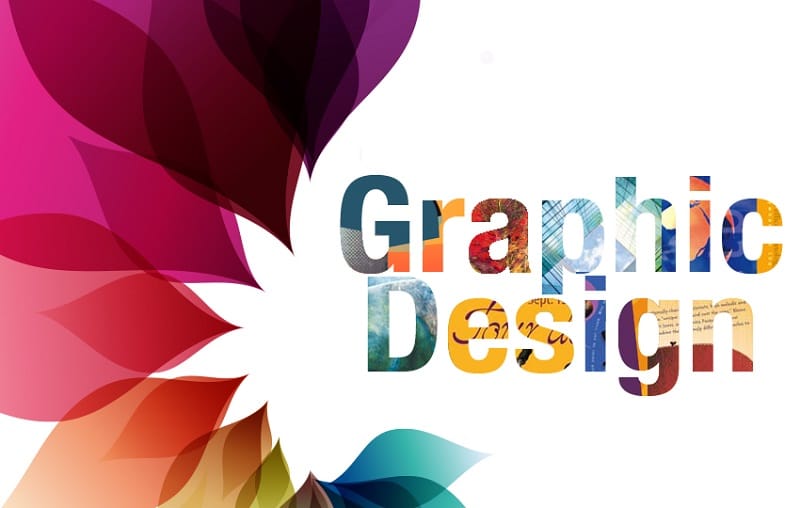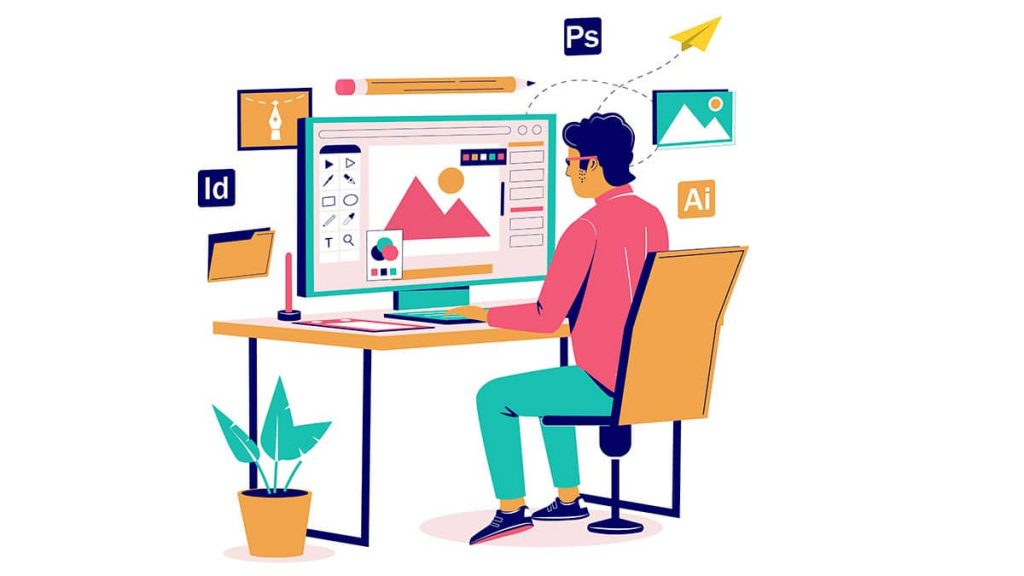Graphic Design - A Path To Creative Expression
A Brief History of Graphic Design
The roots of graphic design can be traced back to ancient civilizations, where symbols and pictograms were used to convey messages and record information. From the hieroglyphics of ancient Egypt to the illuminated manuscripts of medieval Europe, the art of graphic design gradually evolved, adapting to the changing times and technological advancements.The Evolution of Graphic Design in the Modern Era
In the 20th century, graphic design experienced a dramatic transformation, thanks to the advent of mass production, print technology, and the rise of commercialism. Influential figures such as Paul Rand, Saul Bass, and Milton Glaser pioneered new approaches to graphic design, blending artistic sensibilities with functional communication to create lasting visual masterpieces. With the arrival of the digital age, graphic design has further expanded its horizons, embracing interactive media and evolving along with technological advancements.Defining Graphic Design
Graphic design can be precisely defined as the art and practice of visual communication that combines elements such as typography, colour theory, and layout composition to convey ideas, information, and emotions. It is the creative process of crafting visual representations that engage and capture the attention of the audience.The Role of Graphic Design in Communication and Branding
Elements of Graphic Design
Graphic design encompasses various elements that contribute to its overall impact and effectiveness. Let us explore some of these essential components:
A. Typography
Typography, the art of selecting and arranging fonts, is a powerful tool in graphic design. Fonts and typefaces have the ability to evoke different emotions, set the tone of a design, and enhance readability. From elegant serifs to modern sans serifs, typography plays a significant role in creating harmonious visual compositions.Exploring the Power of Fonts and Typefaces
Fonts have the power to evoke emotions and elicit specific responses from viewers. The choice of a script font, for instance, can create a sophisticated and elegant atmosphere while a bold sans serif font may convey strength and modernity.Understanding the Impact of Font Pairing
The art of font pairing involves skillfully combining different fonts to create a visually appealing and balanced design. It is a delicate dance between contrasting styles and harmonious synergy, ensuring that the fonts work seamlessly together to communicate the intended message.B. Colour Theory
Colour is a fundamental element in graphic design, as it has the ability to evoke emotions, convey meaning, and create visual hierarchy. Understanding colour theory is crucial in creating impactful and visually engaging designs.
Unveiling the Psychology behind Colors
Colours have psychological and emotional associations that can influence our perception and interpretation of visual designs. For example, warm colours like red and yellow can evoke excitement and energy, while cool colours like blue and green can evoke calmness and tranquillity.
Strategic Use of Color Palettes in Design
Creating a well-thought-out colour palette allows graphic designers to establish a coherent and harmonious visual identity. A carefully selected colour scheme can enhance the overall message of a design and create a sense of unity.
C. Layout and Composition
The layout and composition of a design are crucial in creating visual impact and capturing the viewer's attention. It involves the arrangement of elements such as text, images, and graphics to create a cohesive and visually pleasing design.Principles of Effective Layout Design
Design principles such as balance, alignment, proximity, and contrast play a vital role in creating visually appealing layouts. These principles facilitate the organization and hierarchy of design elements, ensuring that the message is conveyed effectively.
Balancing Elements for Visual Harmony
Creating visual harmony involves balancing the various elements within a design. This includes achieving a balance between negative and positive space, as well as finding a harmonious relationship between the different elements of the design.Types of Graphic Design
A. Print Design
Print design refers to the creation of visual materials that are intended to be printed and distributed physically. This includes brochures, magazines, posters, and other forms of printed media.
Brochures, Magazines, and Posters
Brochures serve as informative tools, providing readers with a concise overview of a product, service, or organization. Magazines, on the other hand, offer a more in-depth exploration of topics and themes. Posters are widely used for promotional purposes, capturing attention and conveying key messages.
Packaging Design and Its Significance
Packaging design is a crucial aspect of the marketing and branding process. It involves creating visually appealing and functional packaging solutions that not only protect the product but also communicate its unique features and create a lasting impression on consumers.
B. Web and UI/UX Design
In the digital age, web and user interface (UI) or user experience (UX) design have become increasingly important. These fields involve creating visually engaging and user-friendly interfaces for websites, applications, and other digital platforms.
Designing for the Digital Age
Web design focuses on creating visually appealing and functional websites that are accessible and engaging for users. UI design, on the other hand, is concerned with the visual and interactive elements of software and applications, while UX design aims to enhance the overall user experience.
C. Branding and Logo Design
Branding and logo design involve the creation of unique visual identities that represent companies, products, or services. They are crucial in establishing a memorable and recognizable brand.
Creating Memorable Brand Identities
Branding is the process of developing a unique and cohesive identity for a company or product. It involves creating a visual language that reflects the core values, personality, and goals of the brand.
The Art of Logo Design
Logo design is a specialized field within graphic design that focuses on creating visually captivating and meaningful symbols or wordmarks that represent a brand. A well-designed logo has the power to evoke emotions, create brand recognition, and foster brand loyalty.
D. Motion Graphics and Animation
Motion graphics and animation involve breathing life into still designs, creating captivating visuals that engage and captivate viewers.
Adding Life to Still Designs
Motion graphics combine graphic design, animation, and multimedia to create visually dynamic and engaging content. It is widely used in advertising, film, television, and digital media.The World of Animated Graphic Design
Animated graphic design utilizes motion, timing, and visual storytelling to communicate ideas and concepts. From animated logos to explainer videos, animation adds an extra layer of depth and creativity to graphic design, capturing viewers' attention and conveying messages in a memorable way.
Frequently Asked Questions
1. What Skills Are Essential for a Graphic Designer?
Essential skills for a graphic designer include creativity, visual communication, typography, colour theory, layout composition, software proficiency, and problem-solving abilities.
2. Can Anyone Learn Graphic Design, or Is It Purely Talent-Based?
While natural talent can play a role, anyone can learn graphic design with dedication, practice, and a willingness to continuously improve their skills. It is a discipline that combines both artistic flair and technical proficiency.
3. How Does Graphic Design Differ from Fine Art?
Graphic design focuses on creating visual communication and solving specific problems, while fine art is more centered around self-expression and personal creativity. Graphic design serves a purpose beyond the creation of aesthetic beauty.
4. What Are the Common Misconceptions about Graphic Design?
Common misconceptions about graphic design include thinking that it is just about making things look pretty or that it is an easy profession that anyone can do without sufficient training. In reality, graphic design requires a deep understanding of visual communication and the ability to convey messages effectively.
5. How Can Graphic Design Benefit Non-Design Professionals?
Graphic design can benefit non-design professionals by enabling them to create visually appealing materials for their businesses, such as presentations, reports, and marketing collateral. It also helps non-designers appreciate the importance of design in communication and branding.
6. Is It Possible to Have a Career Solely as a Freelance Graphic Designer?
Yes, it is possible to have a successful freelance career in graphic design. Many designers choose to work independently, offering their services to clients on a project-by-project basis. However, freelancing requires self-discipline, marketing skills, and an ability to manage time and finances effectively.
7. What Are the Key Elements of Creating a Successful Graphic Design Portfolio?
Creating a successful graphic design portfolio involves showcasing a diverse range of quality work, including a variety of design projects that highlight your skills and showcase your ability to solve design problems. Organization, presentation, and a clear focus on demonstrating your strengths and unique style are also essential.




Comments
Post a Comment